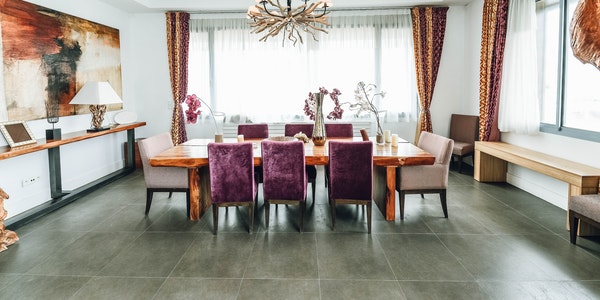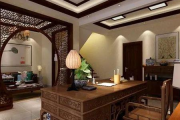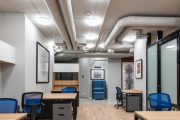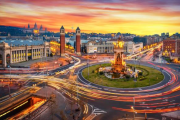We believe that most of the turnover of a restaurant is completed during dinner time. Therefore, if you are also planning to open a restaurant, you may wish to do more research on lighting design, or ask a professional lighting design company to operate it. Because the lighting of the restaurant can create a good dining atmosphere for the restaurant. Whether a restaurant’s lighting design is good or not has a great impact on the restaurant’s business.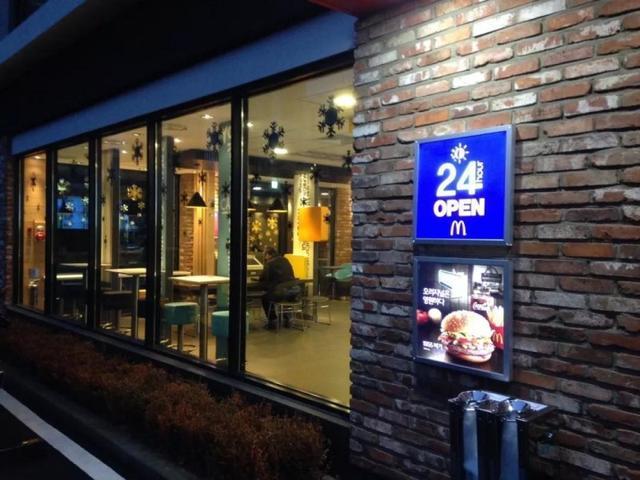
Restaurant lighting design
We all like beautiful things. At night, beautiful lights are always the most beautiful scenery at night. Similarly, restaurants with well-designed lighting are always more attractive to customers. The lighting design of a restaurant is also very important, and it can even directly affect customers’ entrance rate and appetite. So, the question is, what are we going to do about restaurant/restaurant lighting design?
1. Hue of Lighting
First of all, the lighting in the restaurant needs to be bright, but you must pay attention to avoid choosing lamps with low color temperature or too strong light. Only cool-toned lighting can make the originally not spacious space look refreshing and transparent.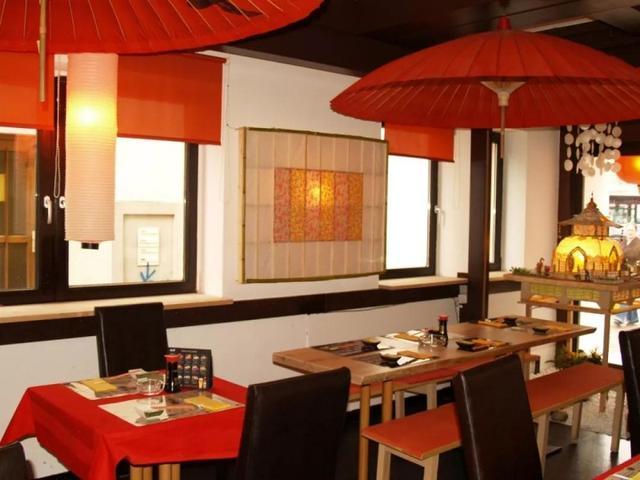
2. The Installation Position of the Light
The lampshade of the dining table lamp should be arranged downwards above the dining table to make the rich cuisine more attractive. It is best to use warm colors in the selection of light sources for lamps and lanterns in restaurants. From a psychological point of view, warm colors are more able to stimulate appetite. And dining under warm lighting will also be more romantic and full of sentiment.
3. Hide the Light
Many experienced lighting designers hide the lights. For example, put it in a suspended ceiling or add other decorations to the lamp. This not only makes the overall lighting of the restaurant softer, but also increases the sense of space in the restaurant, making the restaurant feel more comfortable. Traditional restaurants like to use basic lighting such as chandeliers, downlights, spotlights, etc. After hiding the lights, it is easy to make the design of the restaurant more integrated.
4. Light and Dark Separation
If you learn to use lights to separate light and dark, this is precisely the best way to save space in a small and beautiful restaurant. The restaurant is divided into functional areas through light and dark, virtual and solid. If the lighting settings of the entire restaurant are very ordinary and mediocre, how can they be remedied? In fact, you can choose to make a fuss on the walls and steps. You can also choose some supplementary lighting. A stylish wall lamp or table lamp can also add a lot to the restaurant lighting design.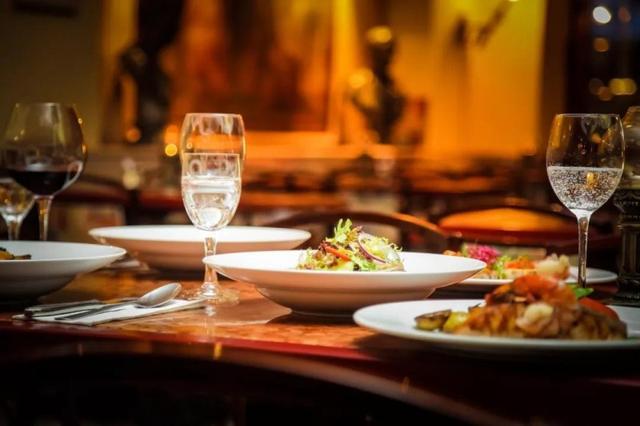
Classification of Restaurant Lighting
Common restaurant lights include the following 4 types:
Fluorescence
Fluorescence is the day-to-day fluorescent lamp. It has the characteristics of high brightness and economy, but it is stiff and lacks aesthetics, making people and food appear pale.
Incandescent light
Incandescent light is a commonly used incandescent lamp. It is easy to control and natural, and it is easy to display the true color of food, but it has a short life span, high power consumption, and high cost.
Color light
Color light is mostly used in special areas, such as illuminating the aquarium with moon green and blue light, which can achieve a clear and clean effect. Illuminating bar or furniture with red light is more soft, but it is generally not suitable for large-scale use and the cost is higher.
Candlelight
Candlelight is a very emotional and atmospheric light. Under its illumination, people and food are also more beautiful. It is generally used in restaurants with specific themes.
Five Functions of Lighting
In restaurants, appropriate lighting effects have the functions of quickly changing customer moods, increasing customer appetite, adjusting customer stay time, highlighting key content of the restaurant, and dividing dining areas.
Change the mood of customers
After customers enter the restaurant, the first thing that arouses their visual attention is the restaurant’s lighting. Then came the dining environment under the lighting. If the lighting is soft and gentle, even the excited customers will soon calm down. If the lights are cluttered and dazzling, even customers who are originally happy will become restless. For casual dining, the first impression of light on customers can even instantly determine their willingness to consume.
Increase the appetite of customers
The good lighting of the restaurant can bring customers both vision and taste, and achieve physical and mental pleasure. Good lighting can increase the texture of food, express the true color of the food, and stimulate people’s appetite. For example, in the deli, the lights are usually orange, which makes the food look more attractive.
Adjust the stay time of customers
During the dining process, lighting can also play a role and influence the customer’s decision. The restaurant that pays attention to the speed of the customers’ coming and going needs brighter lighting, and the decoration color of cool tones can speed up the dining process. Casual restaurants with longer operating hours need soft and moist lighting to attract customers to stop and stay.
Highlight key content
Different types of restaurants have different service focuses. For example, the dinner format attaches great importance to the display of dishes, so we need a specific lighting design. Focus the light on the table so that everyone can focus on the dishes. For coffee shops and bakeries, the key areas are the console and display cabinets. At this time, it is necessary to increase the brightness above the console and display cabinet, and reduce the brightness of the lights in other areas. The brightness contrast allows customers to focus on key content. In the same way, if the dinner restaurant has an open kitchen, then the open kitchen will also become the key content that needs to be highlighted. In addition, employees who work at the bar, console, and open kitchen will be under the spotlight and eyes, and their mentality will be tense and serious, and the efficiency of their work will increase as a result.
Distinguish different dining areas
A restaurant with a relatively large area usually divides the dining space into multiple areas. For example, a small square table area suitable for two people dining, and a large round table area suitable for multiple people dining. The feature of the dining area for two people is that the unit price is low, and most of the white-collar workers nearby come for work meals. Come and go fast, so it is suitable for bright lighting. The feature of the multi-person dining area is that the unit price is high, and most of the department colleagues or friends gather for dinner. Meals are long and have certain requirements for privacy. Therefore, this area is suitable for relatively mild lighting. Moreover, distinguishing the internal space through lighting can also make the space appear spacious and layered.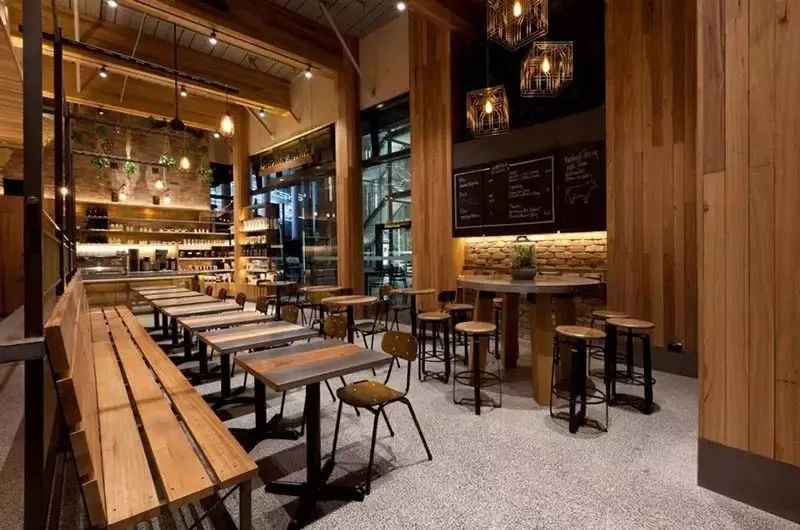
Three Principles of Lighting Design
Sub-area lighting
The lighting design in the restaurant design needs to choose the appropriate illuminance and brightness according to different regional spaces. Make people, food, tableware, and other tabletops best presented, and at the same time provide enough lighting for the activity area beside the table and the entire space. For example: the lighting design of the restaurant hall requires uniform brightness distribution to avoid glare.
Reasonable purchase of lamps
There are many types of lamps, and the lighting effects created by different lamps are also very different. In the dining space, in order to avoid dull single lighting, we usually choose different lamps such as spotlights, table lamps, chandeliers, and reflective light troughs to create different sense of space. For example, we can use chandeliers on the top of the dining space to increase its overall illuminance.
Adapt to local conditions
Different decoration materials require different lights to “echo”. Different materials have different transparency, reflectivity, refractive index, luminosity, etc. The color of the light will also affect the color rendering of the object. For example, the original red wall will appear orange when illuminated by the yellow light. In addition, directional lighting can express the luster and texture of the material, and produce rich and interesting halos and texture changes on the wall or object.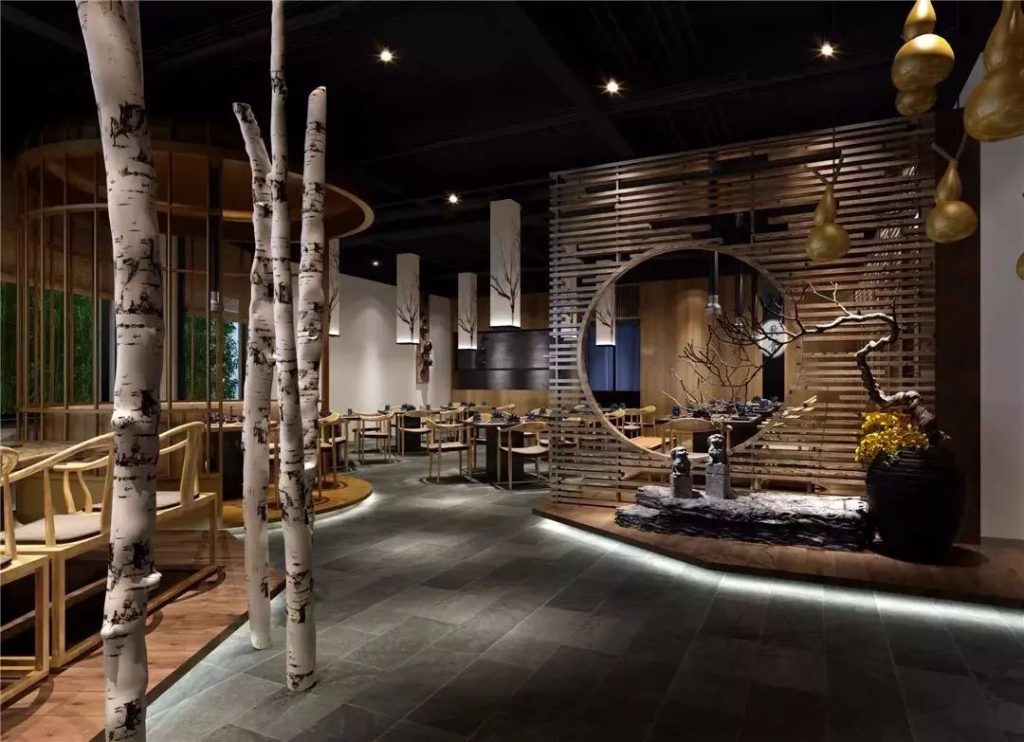
How to Use Lighting to Enhance the Dining Experience
Through the contrast of light and dark, weaken the customer’s awareness of space
The restaurant should work hard to save space. A general restaurant is 1.8 square meters, and some restaurants can do 1.6 square meters. But most customers will not feel that the environment is crowded. Why is this? The big case lies in the lighting. In order to accommodate more diners, restaurants often use longer corridors to connect spaces. The lighting is mainly concentrated in the dining area, and the lighting in the non-dining area is relatively dim. This makes the dining space for diners more complete, and their attention is more concentrated when dining, and they will not be disturbed by pedestrians that shuttle back and forth. Separating light and dark with lights is the best way to save space in a small and beautiful restaurant.
Create a better dining atmosphere through complementary light sources
Many dessert shops or cafes will choose to put a romantic and sentimental wall lamp on the wall of the table to improve the entire dining environment. There are also restaurants that choose to embed LED light strips with pattern effects on the walls, or wall projections and other devices to make the restaurant more comfortable.
Some restaurants choose to use candles as supplementary light sources. The flickering light of candles and warm flames create a relaxed, romantic and warm atmosphere. The lighting design of some restaurants is more sophisticated-using the principle of diffuse reflection to create different textures and colors through the reflection of walls, plants, and metals to increase the interest of the space.

